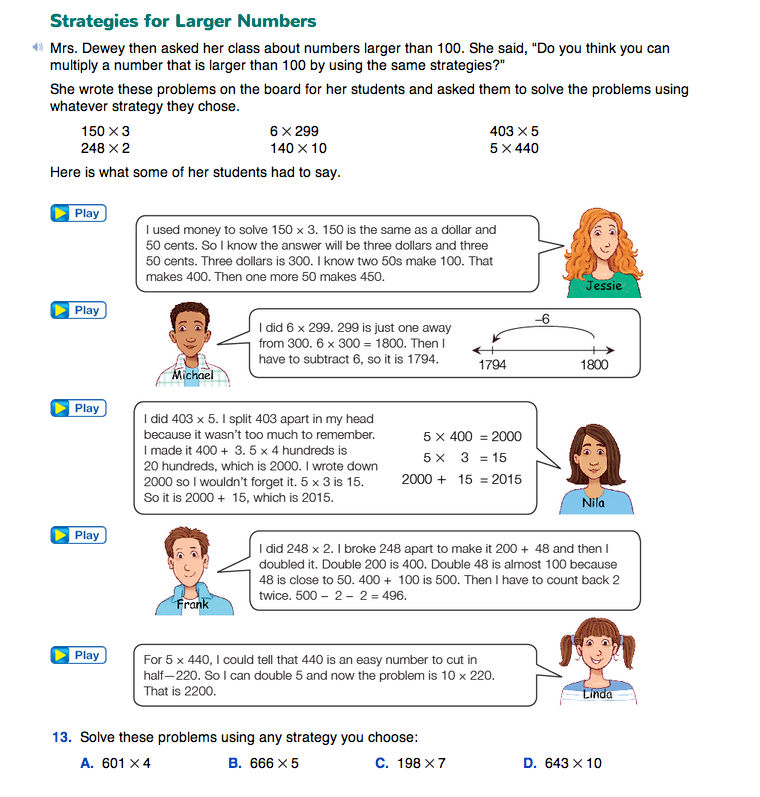Using Multiplication Strategies
Est. Class Sessions: 2Developing the Lesson
Part 2: Multiplication with Larger Numbers
This part of the lesson extends students' thinking to problems involving multiplication of 3-digit by 1-digit numbers. Before reading the vignette in the Strategies for Larger Numbers section in the Student Guide, write the following six problems from the vignette on the board:
150 × 3 6 × 299 403 × 5
248 × 2 140 × 10 5 × 440
Ask:
Have them work in pairs to discuss and solve the problems. Remind them that sometimes a few quick notes are helpful for keeping track of steps or partial products when solving a problem in their heads.
Have a brief discussion of student strategies and methods. Then have students read the vignette on the Student Guide pages and the strategies used by the students in Mrs. Dewey's class. Guide students to see that the same strategies they used for 2-digit by 1-digit problems can work with larger numbers.
Ask:
For Question 13, ask students to demonstrate their strategies. Question 13A can be solved by breaking into hundreds and ones; 13B can be solved by doubling 5, multiplying by 10, and then halving the answer; and 13C can be solved by rounding up 198 to the easier number 200, multiplying by 7, then counting back by two 7 times. Question 13D can be solved by using patterns with zero.
If you have not assigned all the problems in the Homework section, you may assign the rest now.













